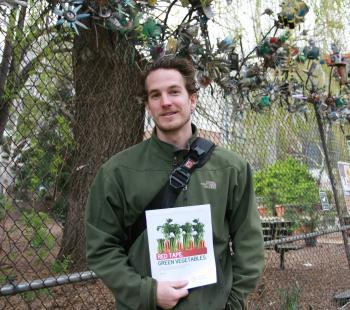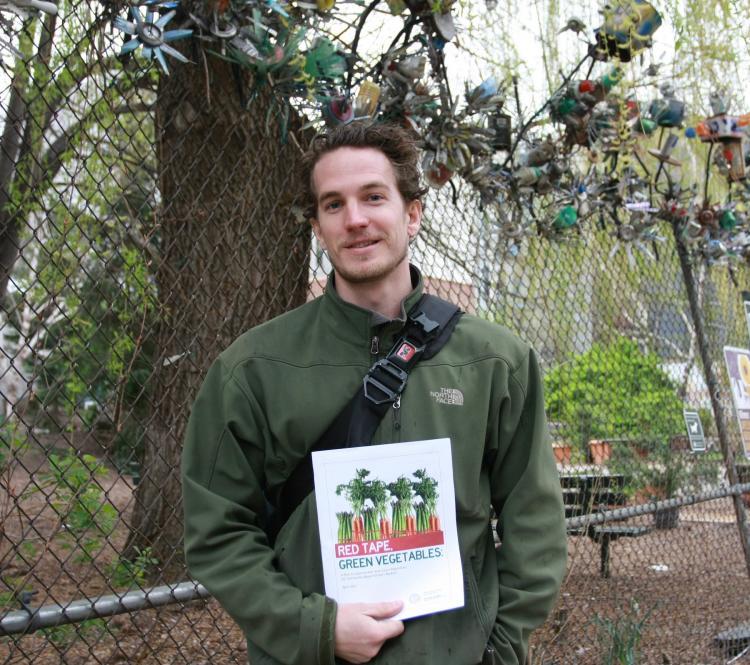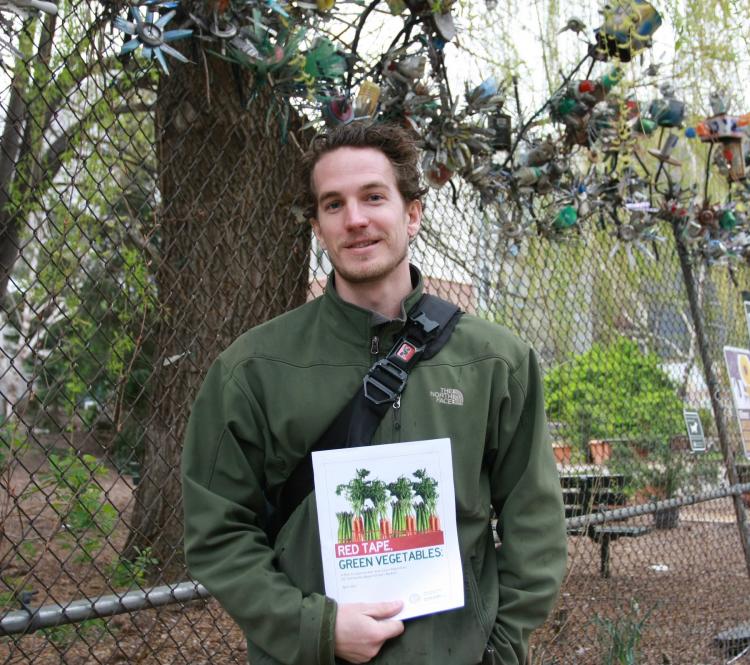NEW YORK—Manhattan Borough President Scott Stringer released a report on Tuesday that exposed the red tape preventing communities from setting up farmers markets.
The mayor and City Council have rolled out a string of initiatives over the last year to promote healthy eating and local food production. While city-operated farmers markets are thriving as part of GrowNYC, Stringer says the smaller, community-based markets are not getting the support they need.
“I think it’s common that the small person gets passed over, we fall under the radar” said Sonya Simmons, who started up a farmers market in Harlem near Jackie Robinson Park six years ago. She has seen an increasing interest in farmers markets over the years and hopes this momentum will continue forth, supporting the smaller initiatives that struggle to get off the ground.
Under current legislation, anyone wishing to set up a market must pay permitting fees of up to $1,660 months before a single cucumber or carrot is sold. This can be an insurmountable obstacle for smaller initiatives in low-income neighborhoods, where nutritious food is most lacking.
Nutritious fruits and vegetables are beginning to trickle down on these “food deserts,” as the city’s Green Cart initiative rolls out. These vegetable and fruit carts are only permitted to sell in areas lacking healthy food options.
Stringer reports, however, that only 450 of the available 1,000 permits for these carts have been handed out since the spring of 2008, and some of the carts are not following the rules. The Korean-American Small Business Center told head researcher, Food and Development Policy Analyst Shira Gans, that some green carts park right next to small green grocers, “to siphon customers.”
Jessica Scaperotti of Mayor Bloomberg’s office says the carts are only permitted to set up in locations without readily available fruits and vegetables; those are the rules in place. She highlighted the city’s Health Bucks initiative. District Public Health Offices distribute Health Buck coupons, worth $2 each, for every $5 in food stamps used to purchase food at farmers markets.
Stringer’s report shows the success of this initiative. In 2009 and 2010, a combined total of $300,000 in food stamps was used at farmers markets and $135,579 in Health Bucks was distributed.
The next step is to make farmers markets more locally accessible.
Stringer suggests streamlining the permitting process under a single city entity to make it easier and less costly to establish a market.
After farmers drive into the city to set up shop at great cost, parking fines deter them from coming back. A better system for regulating farmers market parking needs is to be developed, says Stringer. He suggests Market parking placards, a clear DOT policy for requesting signage, and NYPD training on how to enforce farmers market parking.
“We’re doing it because there’s a need for it,” says Travis Tench, who helps run three farmers markets in Bushwick, Brooklyn, “But we’re not really making any money doing it.”
“I’m thankful for the report because all the information is there,” said Tench. He hopes that with the problems identified, a dialogue will open up and solutions will follow.
The mayor and City Council have rolled out a string of initiatives over the last year to promote healthy eating and local food production. While city-operated farmers markets are thriving as part of GrowNYC, Stringer says the smaller, community-based markets are not getting the support they need.
“I think it’s common that the small person gets passed over, we fall under the radar” said Sonya Simmons, who started up a farmers market in Harlem near Jackie Robinson Park six years ago. She has seen an increasing interest in farmers markets over the years and hopes this momentum will continue forth, supporting the smaller initiatives that struggle to get off the ground.
Under current legislation, anyone wishing to set up a market must pay permitting fees of up to $1,660 months before a single cucumber or carrot is sold. This can be an insurmountable obstacle for smaller initiatives in low-income neighborhoods, where nutritious food is most lacking.
Nutritious fruits and vegetables are beginning to trickle down on these “food deserts,” as the city’s Green Cart initiative rolls out. These vegetable and fruit carts are only permitted to sell in areas lacking healthy food options.
Stringer reports, however, that only 450 of the available 1,000 permits for these carts have been handed out since the spring of 2008, and some of the carts are not following the rules. The Korean-American Small Business Center told head researcher, Food and Development Policy Analyst Shira Gans, that some green carts park right next to small green grocers, “to siphon customers.”
Jessica Scaperotti of Mayor Bloomberg’s office says the carts are only permitted to set up in locations without readily available fruits and vegetables; those are the rules in place. She highlighted the city’s Health Bucks initiative. District Public Health Offices distribute Health Buck coupons, worth $2 each, for every $5 in food stamps used to purchase food at farmers markets.
Stringer’s report shows the success of this initiative. In 2009 and 2010, a combined total of $300,000 in food stamps was used at farmers markets and $135,579 in Health Bucks was distributed.
The next step is to make farmers markets more locally accessible.
Stringer suggests streamlining the permitting process under a single city entity to make it easier and less costly to establish a market.
After farmers drive into the city to set up shop at great cost, parking fines deter them from coming back. A better system for regulating farmers market parking needs is to be developed, says Stringer. He suggests Market parking placards, a clear DOT policy for requesting signage, and NYPD training on how to enforce farmers market parking.
“We’re doing it because there’s a need for it,” says Travis Tench, who helps run three farmers markets in Bushwick, Brooklyn, “But we’re not really making any money doing it.”
“I’m thankful for the report because all the information is there,” said Tench. He hopes that with the problems identified, a dialogue will open up and solutions will follow.







